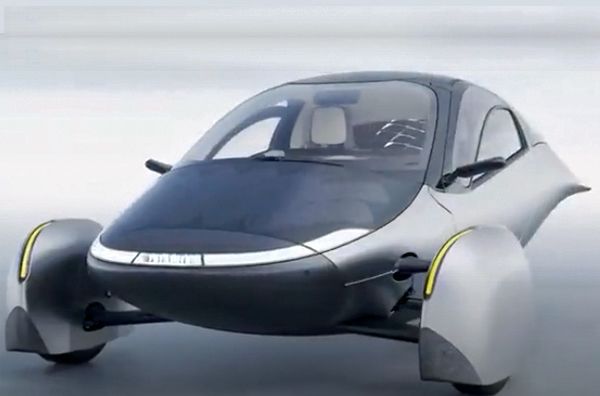Solar cars get ready to roll
Cars with built in solar panels powered by the sun’s rays may soon be zipping down the highway.

Cars powered by the sun’s rays could soon be zipping down the highway.
A new generation of electric vehicles with built-in solar panels are scheduled to hit the production line in the US later this year.
Although these Solar EVs will also rely on lithium batteries, the sun’s energy will boost the range and cut the cost of ownership compared to traditional EVs.
Until now, solar-powered car travel has been hampered by the small surface area on cars and limited efficiency of solar panels.
But by incorporating solar into car bodies, the solar will power day-to-day use over short distances, although long-distance driving will still draw on battery power.
Car makers hope that by boosting the range and reducing the charging frequency, this new generation of EVs powered by the sun may appeal to a new group of consumers.
So who’s at the forefront of this new tech? While a number of car manufacturers have been working on the tech, US company Aptera Motors is among the leaders and is sporting a futuristic design.
The company recently shared details of its Launch Edition Solar EV (pictured), an aerodynamic electric two-seat three-wheeler with motors in the wheels for added efficiency and power.
Thanks to its shape, and the fact that it only has six key body components, it can slip through the air using far less energy than other electric and hybrid vehicles today, its makers say. Rolling resistance -the friction that comes from the wheels against the ground – is also reduced by its three-wheel design.
"We’ve solved the equation for a more efficient way to travel by harnessing the power of the sun, and we’re excited to introduce our Launch Edition vehicle to the world."

The Aptera, which is expected to be in production this year, will be priced between $US26,000 and $US48,000 depending on range and other product features, and the solar panels are expected to provide up to 60 additional kilometres (40 miles) on a typical sunny day.
“We’ve solved the equation for a more efficient way to travel by harnessing the power of the sun, and we’re excited to introduce our Launch Edition vehicle to the world,” explains co-founder Steve Fambro.
“Our tireless efforts have resulted in the Aptera vehicle that can take you where you want to go using the creative energy directly from our sun and efficiently converted into free movement.”
Getting solar cars into the market, however, remains a risky business. Other startups poised to launch new solar-powered vehicles in the next year or two have recently run into financial difficulties, with the future of their designs in question.
After it was unable to raise enough to finance its solar vehicle, German startup Sono Motors called on fans late last year to help out by paying for orders in advance to fund the rollout of its Sono Sion, a five-seat hatchback with 465 integrated solar half-cells. Sono is still working on the car.
The future of Lightyear Zero, a five-seat solar vehicle with in-wheel motors designed by Dutch company Lightyear is also uncertain after its parent company Atlas Technologies filed for bankruptcy last month.
Delivery of the Aptera is likewise funding dependent, according to co-founder Chris Anthony.
“While our delivery timeline is funding dependent, our goal is to begin production by the end of 2023,” he said. “Once we meet our fundraising objectives, we will be able to provide a more accurate delivery timeline.”
Aptera Motors has announced a community funding program called Accelerate Aptera which aims to raise between $20 and $50 million.
The company says it hopes to build eight different assembly plants around the globe by 2028.
The tech
Aptera’s solar technology means consistent access to a charging station or even a plug and socket isn’t necessary, its makers say. Most of those driving Aptera’s Launch Edition will be able to drive for weeks, even months, without ever having to plug in to charge. For instance, in a location with very high sun exposure like Southern California, the average driver would never have to plug in, based on the daily average of 47km (29 miles). In a location with medium sun exposure such as New York or Chicago, drivers will only need to plug in roughly three times per year. Aptera can be charged at any standard power outlet in the world, and when plugged into a 120V outlet, it can charge more than 20kms (13 miles) per hour or around 240kms (150 miles) overnight due to its efficient design.
Who funds it
Aptera is being funded by an accelerator program that sees those investing $US10,000 or more before March 26 to be among the first 2,000 to take delivery of an Aptera.
Is it ready to roll
Aptera plans to move into full-scale single shift production of 10,000 vehicles per year initially, with production to begin by the end of this year.





